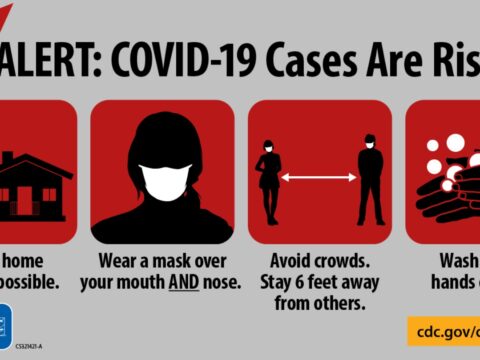First published on July 21, 2020.
This is a message creating tool to persuade the target audience for action.
First, our message should elevate the target audience’s “perceived threat” level. Second, it should include an action that the target audience perceive as doable.
Examine this message:
“Fast food increases your risk for heart disease due to its high content of trans fat”. (Increasing perceived threat level)
Cutting back your fast food intake can reduce your risk for heart disease. (Increasing response efficacy)
Preparing your meals at home is one way to reduce eating fast food”. (Increasing self-efficacy)
1. Appraising the threat:
Elevating the perceived threat level of the reader
The first sentence of the message attempts to elevate the threat level perceived by the target audience/ reader. It uses the fear appeal theory.
It says,
“Fast food increases your risk for heart disease due to its high content of trans fat”.
According to the EPPM model, our message should meet two criteria to increase the perceived threat level: Readers’ perceived severity and perceived susceptibility. We can further raise the perceived threat level by relating the above fact to age, gender, socio-economic percentages relevant to the target audience.
Perceived severity level refers to the extent to which our readers’ understand and perceive the severity of the problem. Similarly, the perceived susceptibility refers to the extent to which our readers understand and perceived their risk level to the threat.
If the recipients perceive the problem as not severe enough and they are not vulnerable, they are very unlikely to do something about it. In contrast, if they perceive the problem is severe enough and they are susceptible, they feel they are under threat and think of doing something about it.
The message below includes percentages at the top left corner and make the message more practically relevant by detailing the signs and symptoms that anyone with the problem may experience: Dry lips and skin, nausea, fatigue, feeling dizzy, irritable or tired etc.

We can also include relevant images that resonate with our target audience as well.
No sooner, we receive a fear-arousing message similar to the above, we appraise its “perceived” threat level. Here the keyword is “perceived”, the more specifically the readers’ perceived threat level, not the message sender’s perceived threat level. Often, message senders who tend to be more knowledgeable than the message recipients become disappointed because the message senders think the recipients do not perceive to the level that they perceive. Being at a higher position in the social ladder, message framers tend to blame the message recipients.
What does the “perceived threat” refer to?
Although we employ here the fear appeal as the strategy, according to Kim Witte the threat differs from fear;
Fear is an emotion; threat is a cognition
2. Appraising the efficacy
According to the EPPM, they switch into the next stage: Action. Here, the message recipients evaluate the actions they can resort to: Appraising the efficacy of the proposed action/s.
In this stage, they evaluate two dimensions of the proposed action/s.
Perceived response efficacy: Does it really work?
After appraising the perceived threat level, then the readers begin to think, according the EPPM model, whether the proposed action really work.
Perceived self-efficacy
Finally, the readers consider whether they can really carry out the proposed action.
If our message satisfies all the above-mentioned four criteria, according to the EPPM, the message recipients are highly likely to engage in the recommended behaviour change.
Below appears a message about the breast cancer risk crafted using the EPPM elements;
| EPPM element | Sentence |
| Threat (Severity) | Alcohol is a proven risk factor for breast cancer. Even small amounts increase the likelihood of developing the disease, with higher intake leading to even greater risk. |
| Threat (Susceptibility) | Just one drink (10g) per day increases the breast cancer risk by about 7-10% in premenopausal women and 9-13% post menopausal women. The more alcohol you drink, the higher your risk. |
| Efficacy (Response efficacy) | Studies show that limiting alcohol intake significantly lowers the breast cancer risk. Even small reductions can improve your long-term health. |
| Efficacy (Self-efficacy) | You can take steps to reduce your risk. Cutting back on alcohol, choosing alcohol-free days, and seeking support make a real difference. |
We can use this model in many ways to create persuasive messages. For example, we can use the model to craft weekly persuasive text messages for behavior change.
As a weekly text message:
“Fast food increases your risk for heart disease due to its high content of trans fat”.
Cutting back your fast food intake can reduce your risk for heart disease.
Preparing your meals at home is one way to reduce eating fast food”
We cannot expect one message can satisfy all these criteria for all people. That is why we first have to define the target audience and study their socio-demographic and psychographic characteristics before crafting the message.
Danger control versus fear control
Whenever our message meets the four perceptions of the target audience, they delve into “danger control”. This is what we want them to do. The experts view this as a cognitive process.
However, there are many situations where our messages that do not meet all the above criteria.
What will happen if some members of the target audience perceive a higher threat level with a lower level of perception that they are not capable of engaging in the suggested action?
According to Michael Basil and Kim Witte, in such situations message recipients will resort to “fear control” methods; this is an emotion control process. Here, they will ignore the message and somehow find reasons to justify their course of inaction.
What arguments they are likely to put forward? According to Michael Basil and Kim Witte, those are;
- They may then risk is overstated unnecessarily.
- They may the threat is not that severe.
- They may, Whatever happens, may happen; we cannot do anything; this is life.
- They may this is a deliberate attempt to limit their freedom.
What we have to do in message framing is to promote message recipients to adopt danger control actions not fear control ones.
Here is the model summary;

EPPM elements against control strategies
This is only an introduction to the EPPM. There is much more to it. And, researchers have addressed the limitations of the model too. For example, this model only deals with the process of dealing with fear. However, fear is not the only emotion messages invoke. They can invoke anger and frustration too.
Researchers firmly advocate that self-efficacy and response efficacy perception levels should be higher than the problem severity and susceptibility perception levels for the message recipients to resort to danger control behaviours. If the reverse takes effect, they will resort to maladaptive fear control behaviours.
I will discuss its applications in another post.



